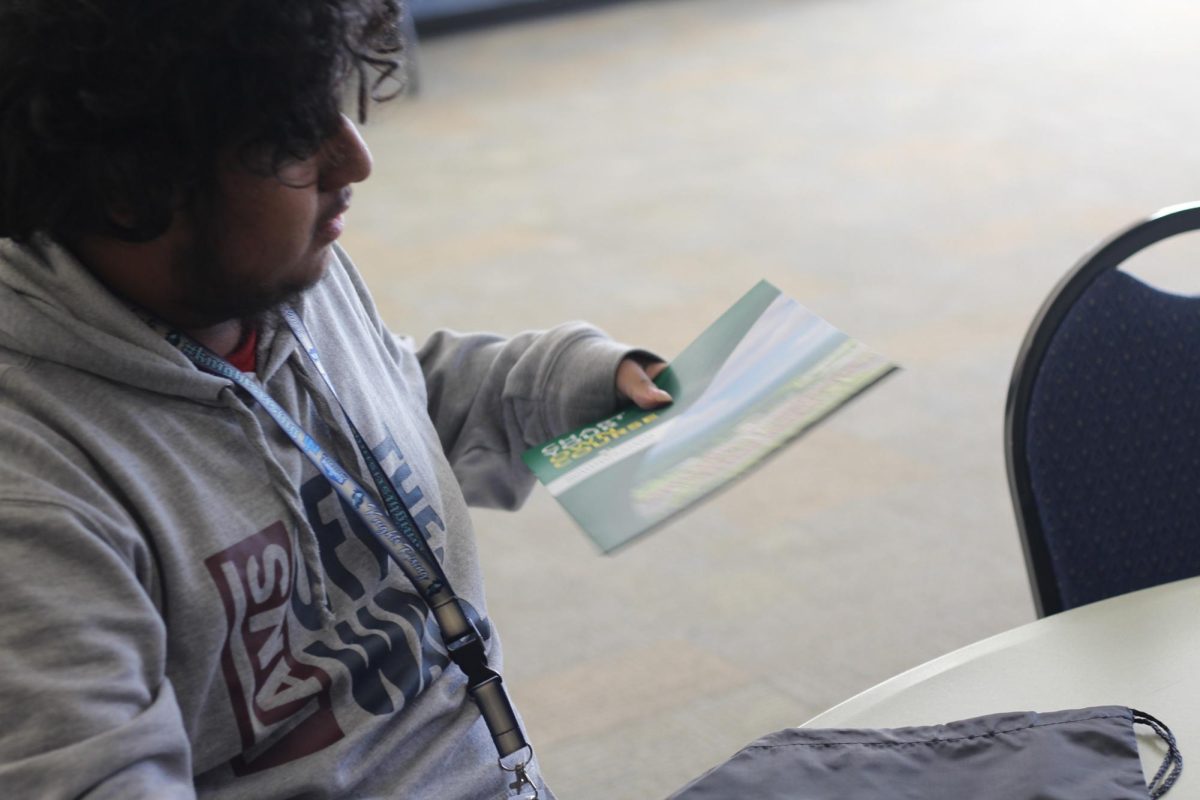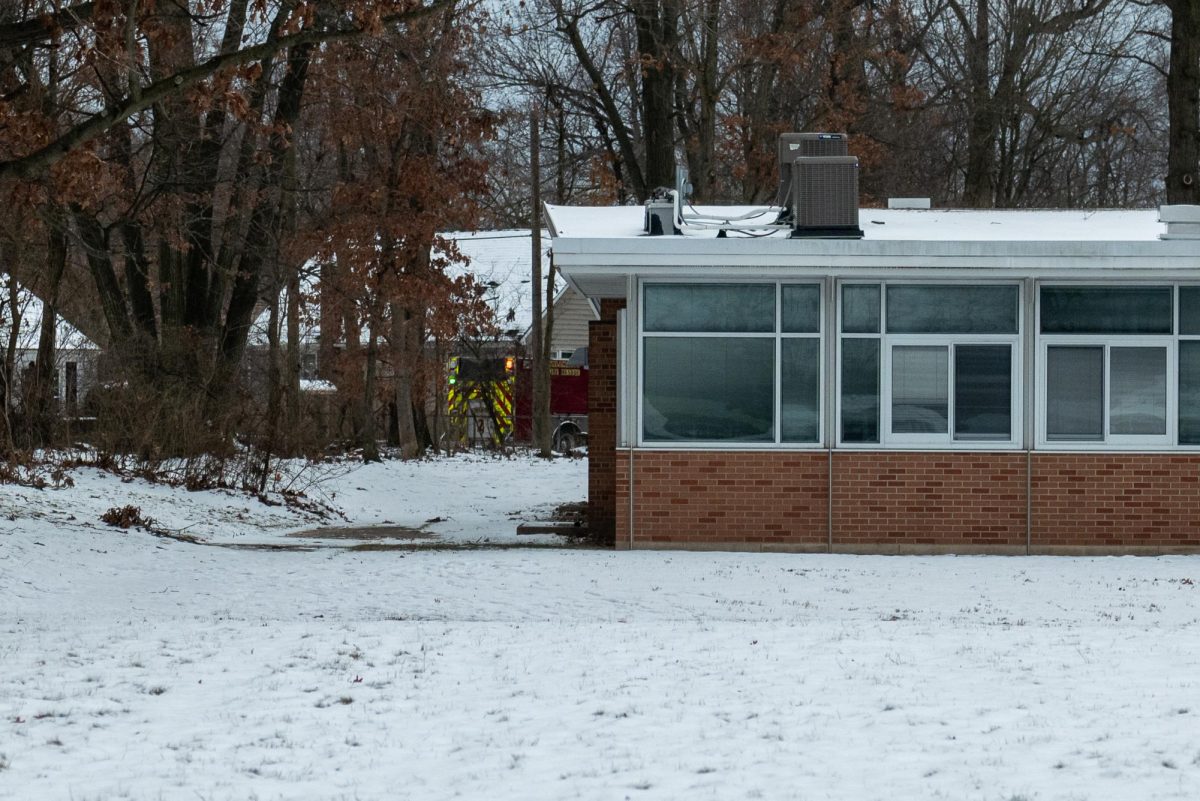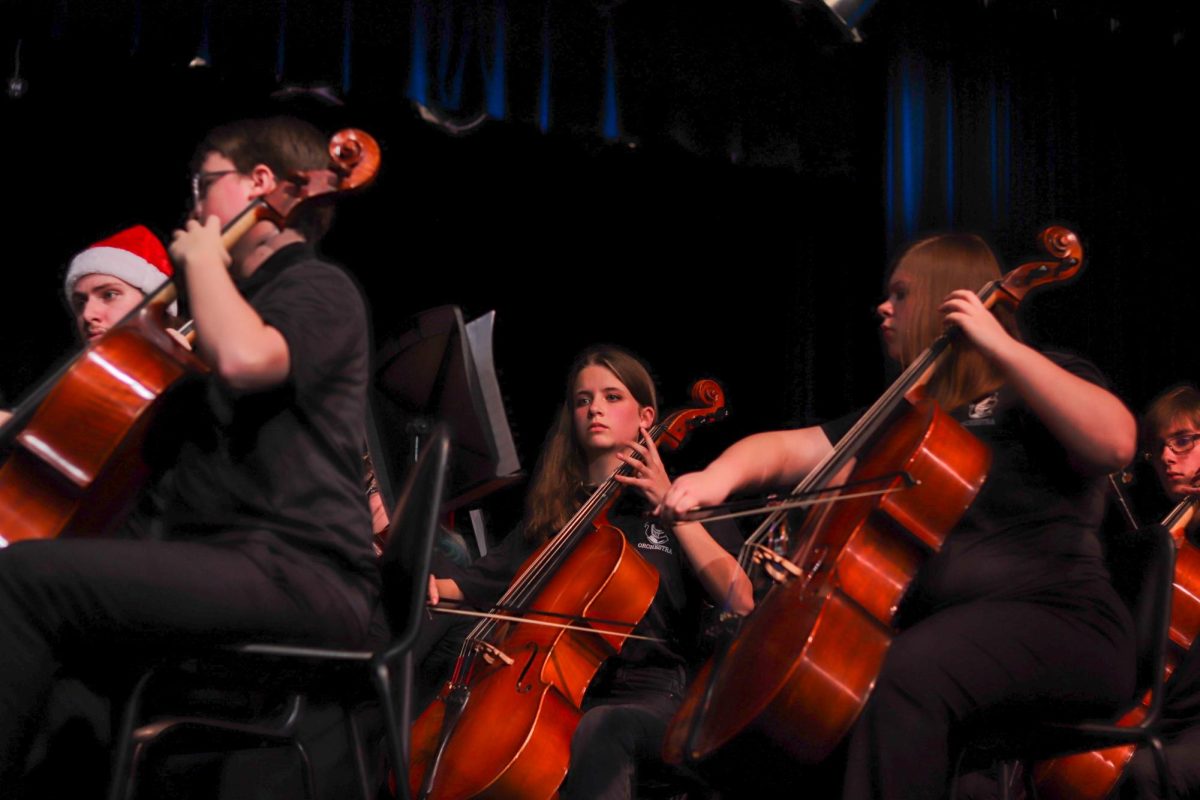
“When an administrator walks in the room, the students’ demeanor automatically changes to one that is more guarded, and their nervous energy sometimes transcends to my own,” said drama teacher Paige Carrow.
Recently, many teachers at Loy Norrix and within the Kalamazoo Public Schools community have been frustrated with the evaluation process. Loy Norrix currently uses the Charlotte Danielson Model to evaluate their teachers. This model breaks up the aspects of teaching into four different domains. State mandates, codes 380.1248 and 380.1249, add a fifth domain, Student Growth, which ties teacher evaluations to government funding for public schools. These domains include: Planning and Preparation, Classroom Environment, Instruction, Professional Responsibility, and Student Growth. Within these domains there are up to 80 subcategories, known as elements, where teachers are rated ineffective, minimally effective, effective, or highly effective.
Domain five, Student Growth, is measured by the differentiation of grades between pre and post assessments and/or another teacher chosen assessment. State standardized tests can also be calculated into the data for this domain. Michigan State Law mandates that this domain must make up 25 percent of a teacher’s total evaluation. This is one of the major conflicts regarding teacher evaluations.
Teachers of advanced placement, honors, regular, and strategic learning classes are all rated using the same rubric. Many educators who teach students with more behavioral and educational challenges argue that this sets them up for failure in their evaluations because it is not accounted for in the rubric.
“Instead of setting them [the individuals being evaluated] up to succeed, it seems like they are being scrutinized,” said Carrow.
On the other hand, teachers that teach higher performing and more naturally disciplined students feel that it is harder to prove student growth because there is less of a knowledge gap to fill.
Social studies teacher James Johnson expresses the lack of control teachers have in their ratings in some categories such as domain five.
“There are other student and family circumstances beyond our control that influence our evaluation process,” said Johnson.
These circumstances reference student performance as well as classroom demeanor, which is reflected in domain two and three of the evaluation rubric, Classroom Environment and Instruction. When students are sleeping, on their phones, or not engaged in class, their actions can reflect poorly on their teachers. Teachers have many methods of refocusing students, but they can’t always account for a student’s reaction. This can result in a greater disruption in the learning environment.
Tisha Pankop, English teacher and member of the KPS Evaluation Committee said, “It’s [the evaluation process is] a disincentive for teachers that are willing to teach students that have the greatest number of challenges and obstacles.”
The weight of domain five, student test scores, is set to increase to 40 percent in the upcoming years as mandated by the state of Michigan. Loy Norrix Dean of Students and evaluator Christopher Aguinaga believes is “absolutely too high.”
Aguinaga believes the model is meant to challenge teachers stating, “Our model is that teachers should constantly be striving to improve. Many teachers are highly effective in some categories but not overall,” said Aguinaga.
In the 2016-17 school year, only six percent of Loy Norrix teachers scored highly effective in their teacher evaluations, compared to Kalamazoo Central with 20 percent, Portage Central with a 94 percent highly effective rating and Michigan’s average is 39 percent.

Science teacher Daniel Houvener argues, “If you [a school] have too many teachers that are highly effective, you might not be giving actual feedback or leaving room for growth.”
While Portage Central does use a different evaluation system, these statistics bring about another major concern for teachers with the evaluation process, subjectivity and lack of continuity.
According to Amanda Miller, a union representative and the president of the Kalamazoo Education Association, “If [some] principals don’t like you, they will often use that category [Professional Responsibilities] to mark you down,” said Miller.
At Loy Norrix there are five administrators who are each tasked with evaluating a portion of the 80 plus teachers, with the principal evaluating department heads, according to Aguinaga. At the beginning of each school year, evaluators will help teachers set up a minimum of two to three professional goals for the year. Throughout the year, evaluators will perform one to two formal observations, where they observe for the majority of a class period, as well as periodic walkthroughs. These observations only last a few minutes and are meant to, in Aguinaga’s words, “gauge the climate of the class.”
At the end of the year there is a summative evaluation, which takes all previous observations into account along with parent input and whether or not the educator has achieved their goals. Teachers may also have the opportunity to contribute and bring evidence to their final evaluation, which Loy Norrix principal Johnny Edwards says that many teachers choose to do. For teachers who don’t have tenure, a mid-year review is conducted. This review takes into account domain five but no rating is given at this time.
A lot of teachers see both formal and periodic observations as subjective.
“One of the biggest divides between teachers and administrators is the fact that they [administrators] sometimes fail to see all that we do in and outside our classrooms for students,” said Carrow. “It’s frustrating that they [evaluators] come in and only see part of what you do.”
“The immediate challenge is that those with the responsibility to ensure good teaching in schools—primarily building administrators—don’t always have the skill to differentiate great teaching from that which is merely good, or perhaps even mediocre…There is also little consensus on how the profession should define ‘good teaching,’” said Charlotte Danielson, author of “Framework for Teaching,” in “Charlotte Danielson on Rethinking Teacher Evaluation from Education Week.”
While Aguinaga believes the evaluation system is effective and critical to a teacher’s success, having helped develop the current model with the teachers union as a former educator, he does note that during observations, “sometimes the details escape us.”
The misperceptions within the evaluation system have left some teachers fearing for their jobs and questioning the motives of their evaluators. When a teacher is rated as ineffective, they are put on a plan known as Track III which, if left on long enough, can eventually lead to their termination.
Teachers are allowed to appeal their evaluation and rating to their school district superintendent, intermediate superintendent of chief administrator within twenty days of being informed of their rating per “Enrolled House Bill No. 4627” from Michigan State Legislature. However, this option is only available to teachers who have tenure.
“Some administrators use the evaluation process as a stick to beat people over the head with. Teachers fear it [the evaluation process], its scary, [and] it’s a bad experience for most teachers,” said Miller.
Math teacher Corey O’Bryan has felt this trepidation first hand, “People can have their own motivations for giving different ratings,” said O’Bryan.
Last school year, O’Bryan received his first negative evaluation after ten years of working at Loy Norrix, which surprised and confused many of his colleagues. O’Bryan has a Masters in Mathematics Education and has been teaching curriculum, which he helped author and has been adopted by Kalamazoo Public Schools districtwide. O’Bryan has received a different rating in each evaluation cycle over the past three years. He received his first negative evaluation in 2017, which included an ineffective rating in content knowledge despite his extensive qualifications.
An ineffective rating in content knowledge is defined as “Makes content errors or does not correct errors made by students” and “Displaying little or no understanding of the range of pedagogical approaches suitable to student learning of the content,” according to Kalamazoo Public Schools adaptation of “Enhancing Professional Practice: A Framework for Teaching” by Charlotte Danielson.
Negative marks on teacher evaluations can bring on a range of emotions for teachers, from anger and frustration to shame and dejection.
“It’s hard not to take it personally. When your heart is in the job, it’s hard to have someone label you [in even one category] as ineffective,” said Carrow
“It’s hard for [on] teachers not to get good grades,” said Pankop
To help improve these ratings, Aguinaga says that the district wants to emphasize consistency and realistic goal setting for teachers.
“This [the districts goals] will stretch our teachers and better our teachers,” said Aguinaga
This push for consistency is meant to improve the subjectivity of the rubric.
Assistant Superintendent and head of the evaluation committee, Sheila Dorsey-Smith, stated in an interview with Knight Life that she cannot comment on the Kalamazoo Public Schools teacher evaluation process or rubric due the inclusion of personnel matters in this article.
Charlotte Danielson sums up this discontent and need for change stating, “I’m deeply troubled by the transformation of teaching from a complex profession requiring nuanced judgment to the performance of certain behaviors that can be ticked off on a checklist.” Danielson continued, “In fact, I believe it’s time for a major rethinking of how we structure teacher evaluation to ensure that teachers, as professionals, can benefit from numerous opportunities to continually refine their craft.”
Categories:
Getting Graded on Giving Grades: Teachers Discontented with the Evaluation Process
April 25, 2018
1
0
More to Discover








esmeralda • Apr 26, 2018 at 1:27 pm
Not all students have the proper resources, motivation,commitment, and support system. It is not the teachers fault but its the schools fault for not working as a unit to help students more.